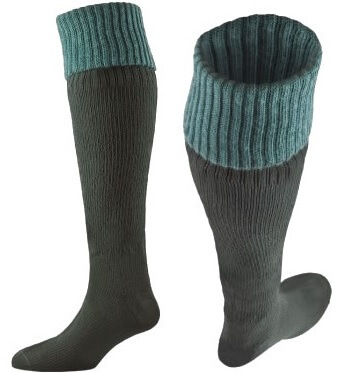As the temperature drops and winter sets in, it’s essential to keep your feet warm and comfortable, especially when venturing outdoors. The right choice of socks can make a significant difference in providing insulation and preventing cold feet.
In this article, we will explore the best materials for winter socks, highlighting their key features, benefits, and factors to consider when selecting the ideal pair to keep your feet cozy throughout the winter season.
Wool
Wool is a classic and popular choice for winter socks, and for good reason. Wool fibers have excellent insulation properties, providing natural warmth and moisture-wicking abilities. Merino wool, in particular, is highly regarded for its softness, breathability, and temperature-regulating properties. It traps heat while allowing your feet to breathe, preventing excessive sweating and odor buildup. Additionally, wool is known for its moisture-absorbing capabilities, keeping your feet dry even in damp conditions.
Cashmere
For ultimate luxury and warmth, cashmere socks are a top choice. Cashmere, sourced from the soft underbelly hair of cashmere goats, offers exceptional insulation and softness. These socks are incredibly cozy and provide excellent thermal regulation, ensuring your feet stay warm without feeling overheated. Cashmere socks are a great investment for those seeking indulgent comfort during the winter months.
Synthetic Fibers
Synthetic materials like acrylic, polyester, and nylon are also commonly used in winter socks. These materials often blend with natural fibers to enhance performance. Synthetic fibers are known for their moisture-wicking properties, effectively drawing moisture away from the skin and keeping your feet dry. They are also lightweight, durable, and quick-drying, making them suitable for various winter activities such as skiing or hiking.
Blends
Many winter socks combine different materials to maximize performance. For example, a popular blend is merino wool with synthetic fibers. This combination offers the best of both worlds, with the softness and insulation of wool combined with the moisture-wicking and quick-drying properties of synthetic fibers. Blended socks often provide enhanced comfort, durability, and moisture management.
Fit and Cushioning
When selecting winter socks, pay attention to the fit and cushioning. Look for socks with a snug but not overly tight fit to ensure proper insulation and comfort. Cushioning, especially in the heel and toe areas, provides extra warmth, impact absorption, and overall comfort during winter activities.
Layering
Layering socks is another technique to enhance insulation and warmth during colder temperatures. Consider wearing a thin moisture-wicking liner sock underneath a thicker, insulating sock. This layering approach helps to wick moisture away from the skin while providing additional insulation.
Conclusion
Investing in high-quality winter socks is essential for keeping your feet warm and cozy during the cold winter months. Whether you opt for natural fibers like wool and cashmere, synthetic materials, or blended options, prioritize insulation, moisture-wicking properties, and proper cushioning. Consider your specific needs and activities when selecting the ideal pair of socks for winter. Remember, keeping your feet warm and comfortable will not only enhance your overall winter experience but also contribute to your overall well-being during the colder months.

For over 12 years, I have been testing and reviewing heating technologies that overcome cold weather conditions. In recent years, I have specialized in the heated apparel. I’ve made it my mission to educate people about heated clothing.
